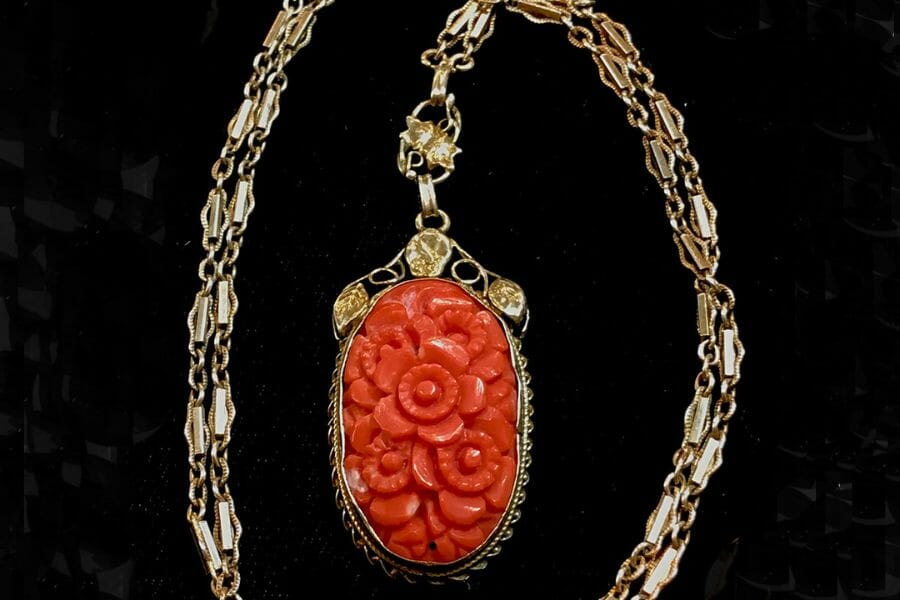Coral reefs, often called the “rainforests of the sea,” are like underwater treasure troves brimming with vibrant life and value beyond measure. But things can get a bit fishy when putting a price tag on these marine wonders. Coral’s worth stretches far beyond dollars and cents, as they are crucial in maintaining a healthy ecosystem, providing various benefits to humans and the planet.
It’s no secret that our oceans have a lot riding on these underwater gems, and as their importance comes to light, folks are starting to ask: just how much are corals worth, anyway? In this article, we’ll dive deep into the world of coral reefs to uncover the actual value beneath the waves. From bolstering coastal economies with tourism dollars to keeping our dinner plates stocked with seafood, corals are the unsung heroes of the sea.
What Coral Is
Coral, an essential component of the ocean’s biodiversity, is often used to describe the organisms and the spectacular underwater structures they create. Corals are tiny marine animals called polyps, which belong to the phylum Cnidaria, the same group that includes sea anemones and jellyfish. Though these little creatures might seem inconsequential, their collective power creates some of the world’s most diverse and awe-inspiring ecosystems.
Coral reefs are formed through a fascinating partnership between the coral polyps and a particular type of algae called zooxanthellae. The algae reside within the tissues of the coral polyps and, in return for a safe and cozy home, supply the corals with food through photosynthesis. This symbiotic relationship not only fuels the growth of the coral colonies but also contributes to the vibrant colors that make these underwater habitats so mesmerizing.
Red Coral
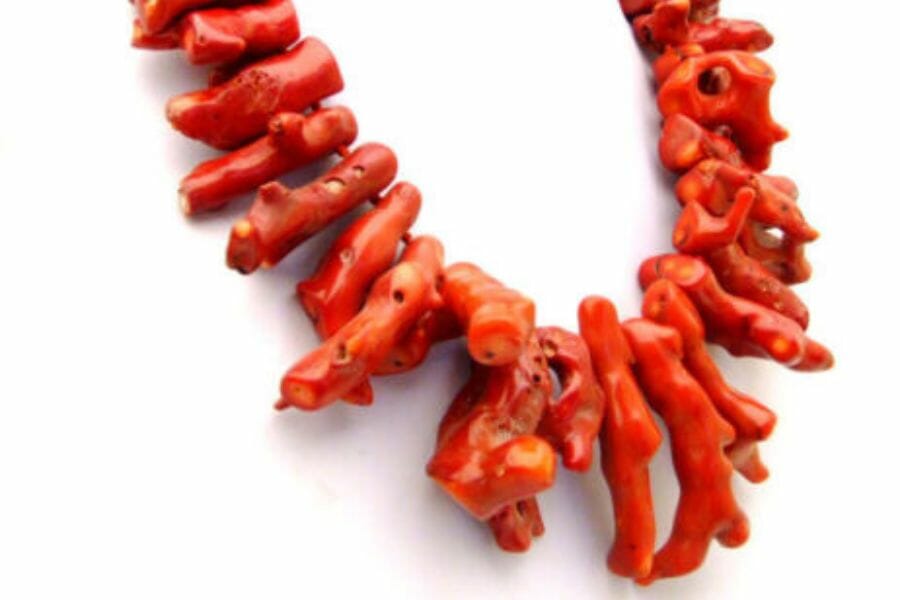
Red coral, also known as precious coral, is a rare and highly sought-after species, prized for its vibrant, deep red coloration. Scientifically classified as Corallium rubrum, this unique coral inhabits the rocky seabeds of the Mediterranean Sea and the western Pacific Ocean.
The complex, tree-like branches of red coral, composed of calcium carbonate, have been valued for centuries in various cultures for their beauty and use in creating stunning jewelry and ornamental pieces.
How much is a red coral worth
Red coral’s cost is determined by its origin, color, shape, and general clarity. Red coral typically costs between $3 to $145 per carat.
Deep Pink Coral
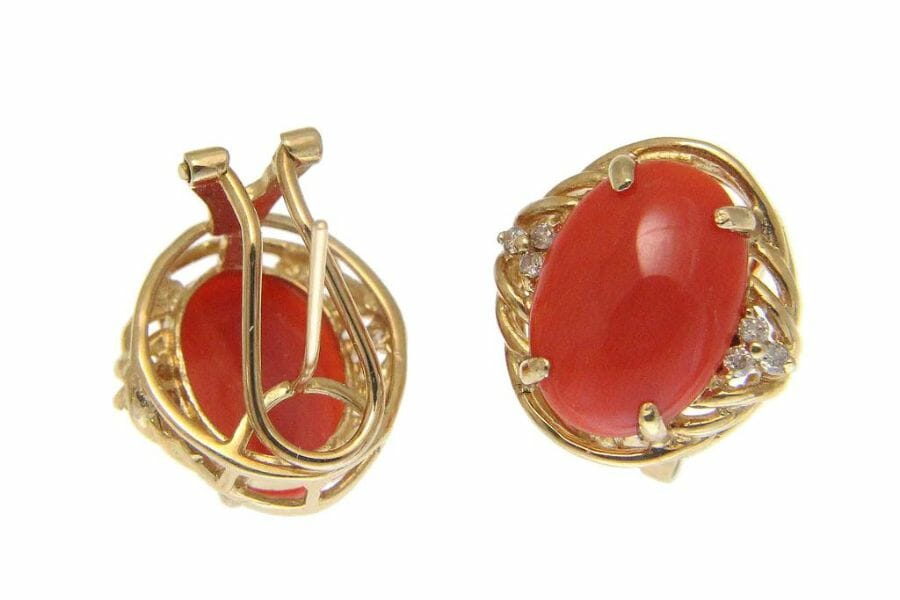
Deep pink coral is a captivating variety with a rich, rosy hue. Often found in species like Corallium japonicum, these corals typically reside in the Pacific Ocean around Japan and Taiwan. Like their red counterparts, deep pink corals are highly coveted for their striking color, adding elegance to jewelry and art pieces. Their distinct hue and alluring charm make them a cherished treasure of the ocean’s depths.
Deep pink corals acquire their vibrant color through a mix of factors, such as their unique pigments, the presence of microscopic symbiotic algae called zooxanthellae, and genetic makeup. The pigments within the coral’s tissues, along with the photosynthetic pigments in the zooxanthellae, contribute to forming the coral’s vivid hue. Moreover, external factors like water depth and light exposure can also impact color intensity. The interplay of these elements results in stunning deep pink shades.
How much is a deep pink coral worth
Deep pink coral is one of the rarest and most unusual varieties of coral, and it frequently costs between $5 to $12 per carat.
Light Pink Coral
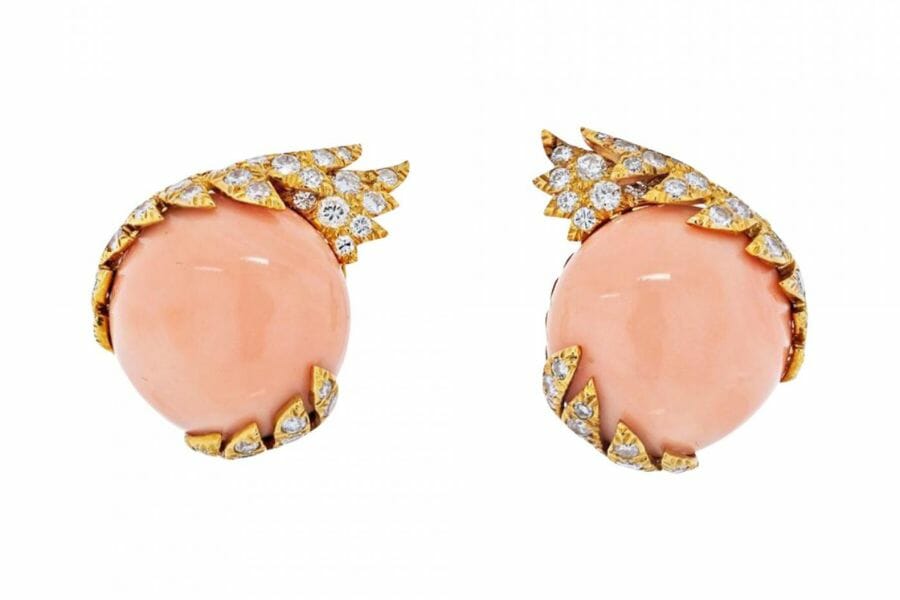
Light pink coral, a delicate and enchanting coral variant, captivates with its soft, pastel hue that embodies the gentler side of the ocean’s wonders. This type of coral, frequently found among species such as Corallium secundum or Corallium konojoi, thrives primarily in the waters of the Pacific Ocean, including regions around Japan, Taiwan, and the Philippines. The subtle blush tones of light pink coral make it highly desirable, adding a touch of grace and refinement to jewelry and decorative pieces alike.
Light pink corals get their color from a combination of factors, including specific pigments within the coral’s tissues and their unique symbiotic relationship with microalgae called zooxanthellae. These microscopic algae, which reside inside the coral polyps, play a vital role in determining the coral’s coloration. The photosynthetic pigments in zooxanthellae and the coral’s pigments contribute to the coral’s distinctive hue.
How much is a light pink coral worth
The cost of light pink coral can vary widely depending on quality, size, rarity, and demand. Each carat of light pink coral can cost between $3 to $5.
Black Coral
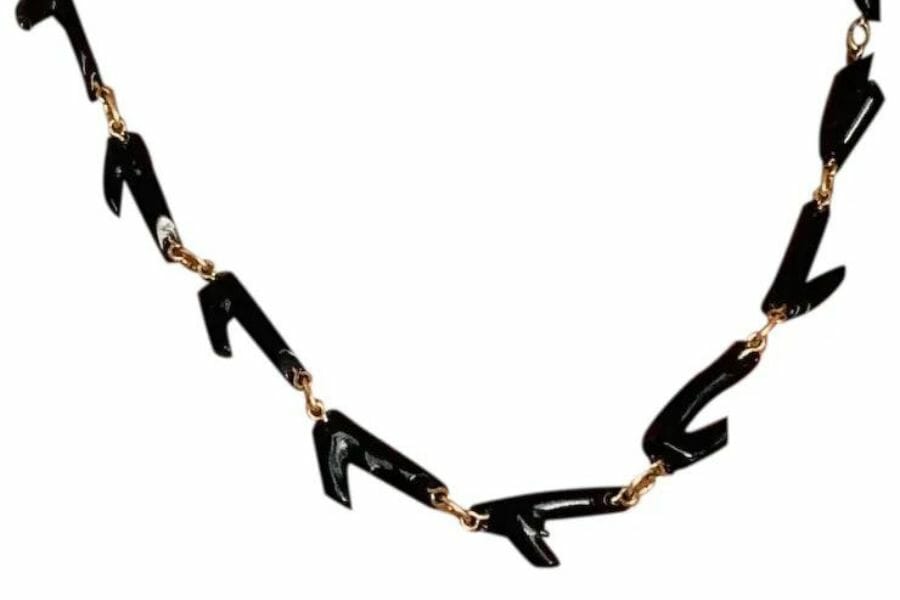
Black coral, a captivating and enigmatic coral type, derives its name from its skeleton’s deep, dark hue, ranging from black to dark brown. Belonging to the order Antipatharia, these corals are often found in deep waters with little sunlight, ranging from 150 to over 1,000 feet in depth. However, some species can also reside in shallower waters.
Black corals get their characteristic dark color from the unique composition of their skeletons, which are formed of proteinaceous materials called chitin and melanin. Unlike other corals with calcium carbonate skeletons, black corals have a protein-based skeletal structure, making them more flexible and resilient.
How much is a black coral worth
Black coral prices can vary significantly, with higher-quality pieces commanding higher prices. Usually, black coral ranges from $2 to $5 per carat.
Why Corals Are So Expensive
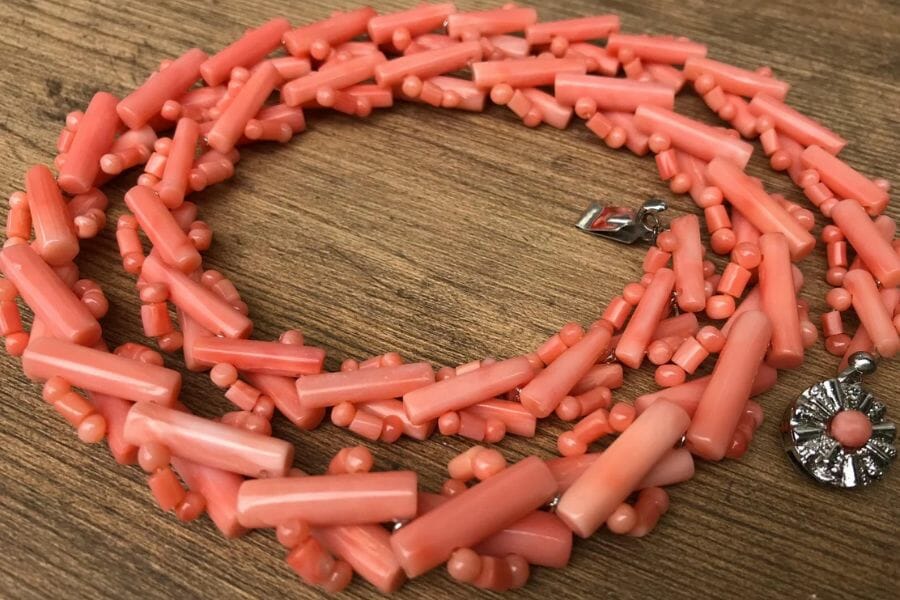
Corals, the extraordinary marine architects, are highly valued for many reasons that extend far beyond their striking appearance. Their contributions to the natural environment and human society are invaluable, making them true ocean treasures.
One key reason corals are so cherished is their unparalleled ability to create complex, diverse ecosystems that support an astonishing array of marine life. Coral reefs serve as crucial habitats, providing food, shelter, and breeding grounds for countless species, including fish, crustaceans, mollusks, and more. As a result, they play a vital role in maintaining the health of the oceans and the overall balance of marine biodiversity.
Corals also offer various ecological services that benefit humans and the planet alike. They act as natural barriers, protecting shorelines from erosion and the destructive force of storms by reducing the impact of waves. This helps maintain the integrity of coastal ecosystems and prevents costly damage to property and infrastructure.
Corals’ unique beauty and intricate formations make them a highly sought-after resource for ornamental and artistic purposes. Various coral types are used to create exquisite jewelry and decorative pieces, further cementing their value in cultural and aesthetic contexts.
Corals are precious for their unparalleled contributions to the environment, economy, and human culture. They truly deserve our admiration and protection as we strive to preserve these irreplaceable assets for future generations.
How To Determine The Value Of Coral
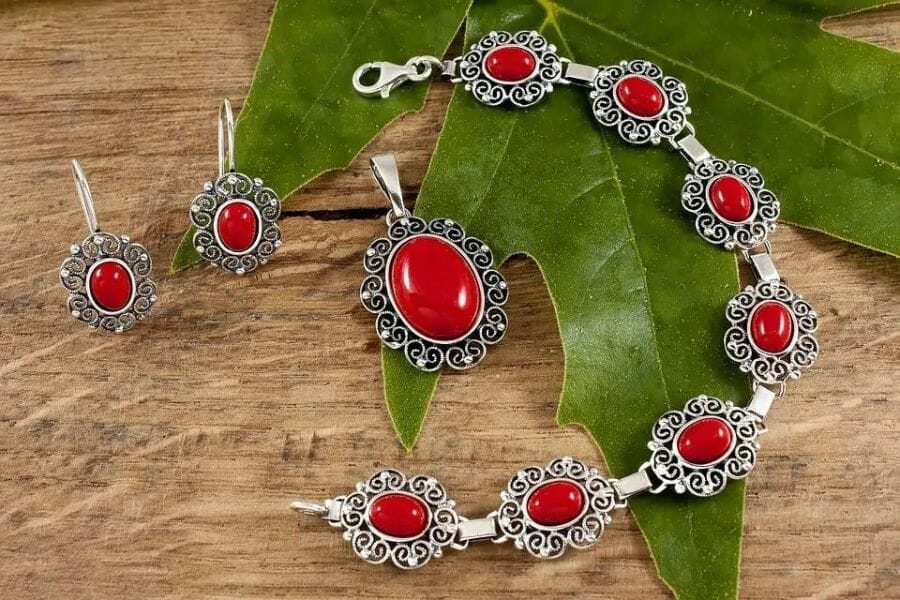
A few key factors typically influence the price of any particular coral:
Color
The color of a coral piece significantly impacts its value. Vibrant, even, and rare colors like deep red or pink are often more valuable than lighter or common shades. The consistency and intensity of color also play a role in determining the coral’s price.
Size
Larger and more massive coral pieces generally fetch higher prices. As coral is a slow-growing organism, larger specimens may take decades or even centuries to reach their size, making them rarer and more valuable.
Quality
The quality of a coral piece is critical in determining its worth. Higher-quality corals are free from imperfections such as spots, pits, cracks, or discoloration. Corals with well-defined, intricate, and symmetrical structures are more desirable and valuable.
Rarity
Some coral species are rarer than others due to their specific habitat requirements, slower growth rates, or overharvesting. More occasional corals tend to command a premium price in the market.
Demand
Market demand for specific coral colors, species, or shapes can influence prices. For instance, trends in jewelry and home decor can affect the value of particular coral types.
Treatment
Natural, untreated corals are generally more valuable than those that have been dyed, bleached, or otherwise altered to enhance their appearance.
Source
The origin of the coral can also affect its price. Corals from specific locations or those sourced sustainably and ethically may be more valuable to conscious buyers.
Craftsmanship
When it comes to coral jewelry or ornaments, the skill and expertise of the artisan who transforms the raw coral into a finished piece can greatly impact its price.
Coral Price By Color
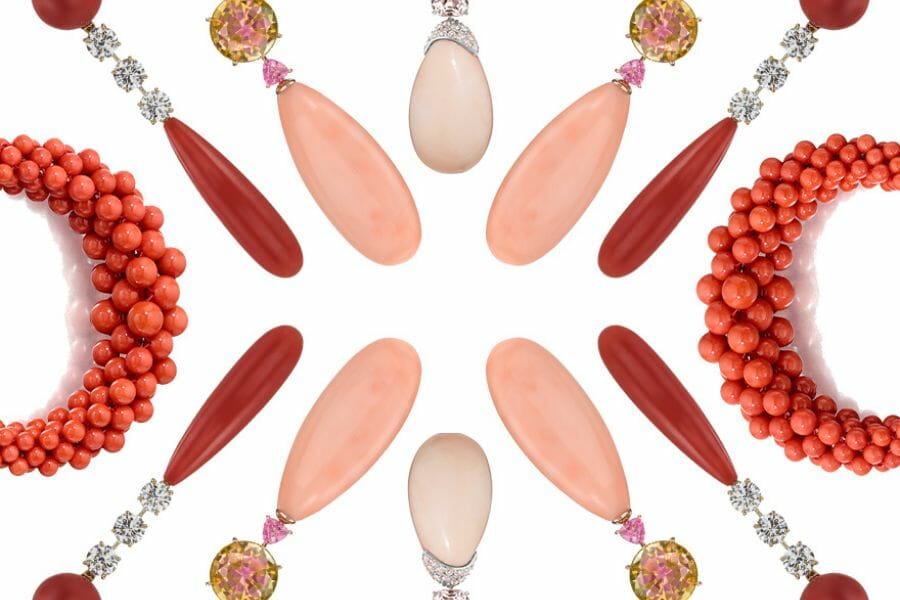
Knowing the contributing elements can help you determine the worth and cost of coral. The most popular coral varieties, colors, and prices are listed below.
Coral values by color
| Color | Location | Price (Per Carat) |
| Red Coral | Any | $3 – $145 |
| Deep Pink Coral | Any | $5 – $12 |
| Light Pink Coral | Any | $3 – $5 |
| Black Coral | Any | $2 – $5 |
The price and worth of various corals vary greatly. Let’s figure out how much coral in other units would cost.
Coral pricing by unit of measurement
| Measurement | Price |
| A carat of coral | $2 – $145 |
| A gram of coral | $10 – $730 |
| An ounce of coral | $280 – $20,550 |
| A kilogram of coral | $10,000 – $725,000 |
| A pound of coral | $4,540 – $328,850 |
| A ton of coral | $9,071,850 – $657,709,130 |
How To Get An Appraisal On Your Coral
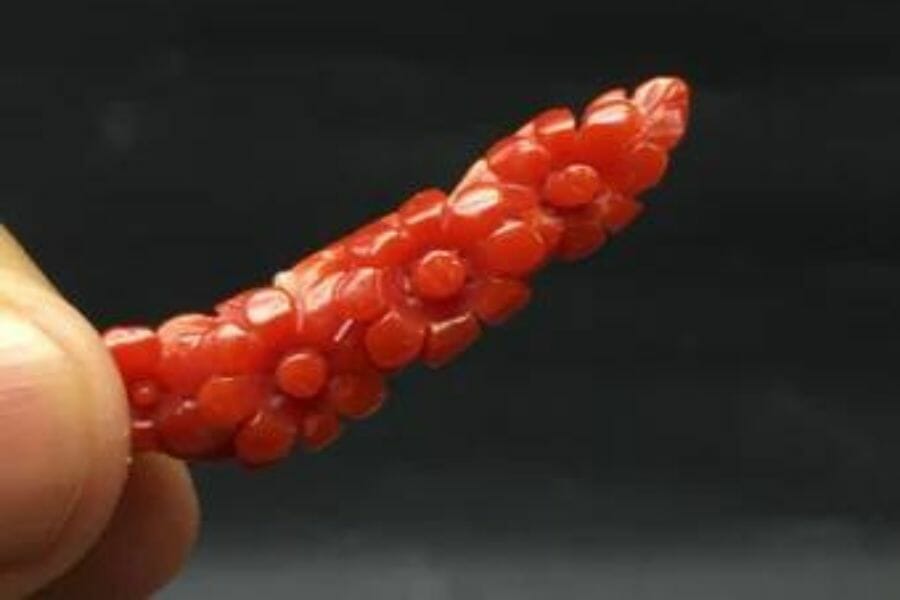
To get an appraisal for coral, particularly for coral jewelry or decorative pieces, follow these steps:
Look for professional appraisers or gemologists in your area with experience with coral and other organic materials. You can search online, ask for recommendations from friends or family, or consult with reputable jewelry stores. When you find potential appraisers, verify their qualifications, experience, and certifications. Look for appraisers who are members of recognized appraisal organizations such as the International Society of Appraisers (ISA).
Contact the appraiser to schedule an appointment. Inquire about the appraisal process, fees, and the time required to complete the appraisal. Ensure you provide any relevant information about the coral piece, such as its origin, history, or any documentation you have.
Bring your coral piece and any relevant documentation to the appointment. The appraiser will assess the coral’s characteristics, such as color, size, quality, and rarity, to determine its value. They may also use specialized tools and equipment to examine the coral more closely.
After completing the appraisal, request a written report detailing the appraiser’s findings and the estimated value of your coral piece. This report can be helpful for insurance purposes, resale, or your records.

